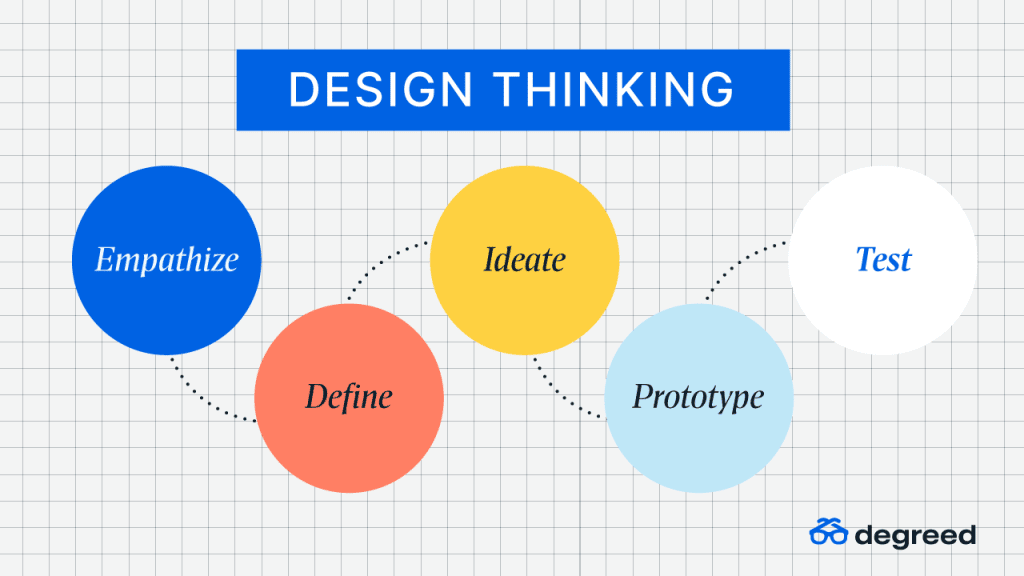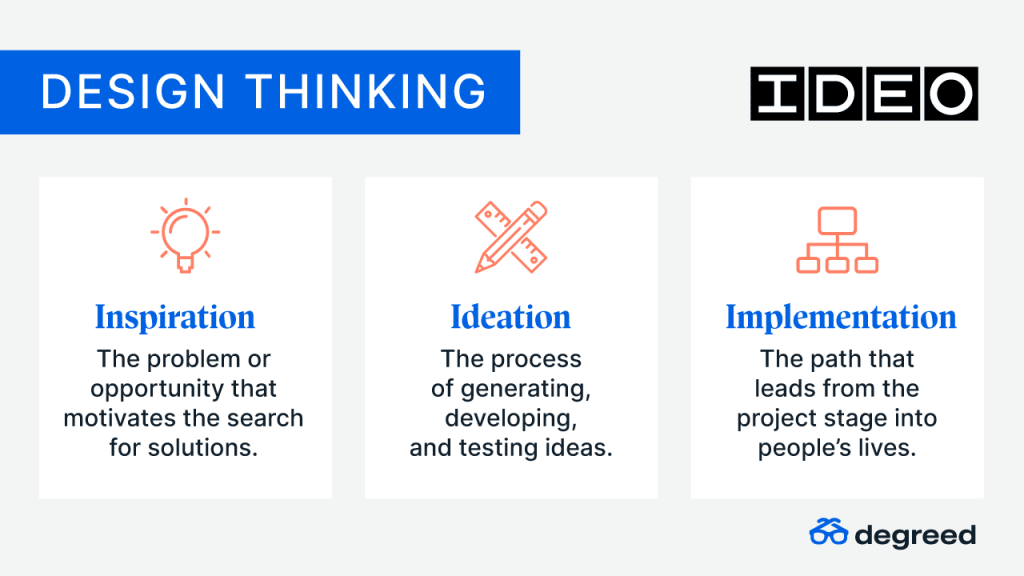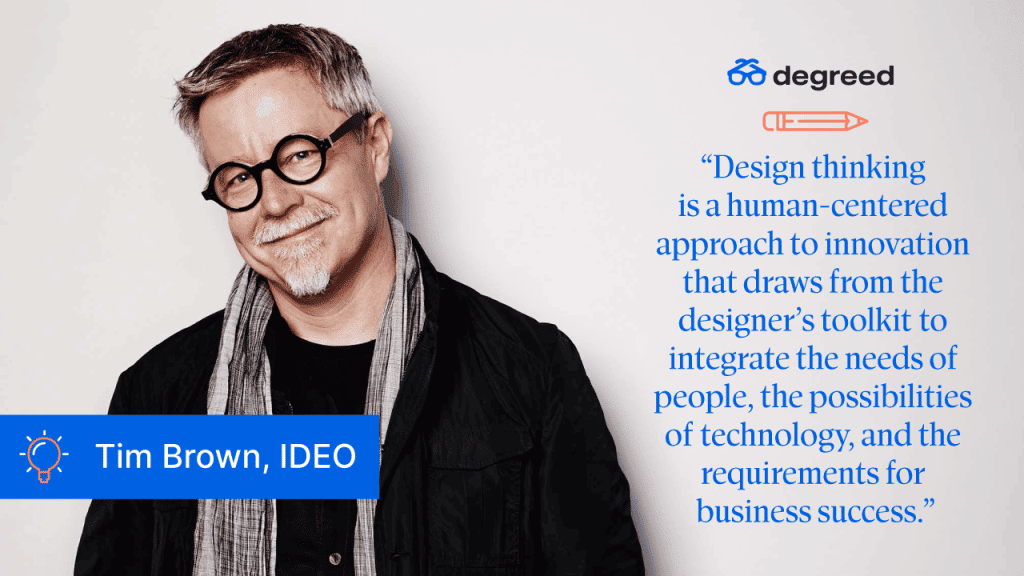If you don’t think your organization is creative enough to implement design thinking processes, think again.
Design thinking isn’t about your knowledge of design concepts or color palettes; rather, it’s about designing tools and processes with end users in mind. When you design programs or platforms directly for users, you can increase engagement, adoption and satisfaction.

What is a design thinking process?
A design thinking process starts with the belief everyone is a designer and design is everywhere. While the above image suggests a step-by-step process, design thinking is non-linear and iterative. It means companies like Degreed are continuously building, redefining, innovating and improving products and services.
The five stages of design thinking are shown in the image above and consist of:
Empathizing: Understand your users and their needs.
Defining: Analyze and identify issues to be solved.
Ideating: Create and share ideas — even the off-the-wall ones.
Prototyping: Draw up solutions.
Testing: Just as it says, go forth and test your solutions.
When you stop and think about the process, you might realize you use it in everyday life — all the time. You practice design in the ways you plan out your day, arrange furniture, build spreadsheets or create training programs.
The most important foundational piece of design thinking is integrating the end users’ needs before you begin creating, so time isn’t wasted solving the wrong problems. It’s a mindset of relentlessly trying to understand the user and problem at hand.

Actionable design thinking steps
You can implement design thinking and bring its benefits to your organization in four key ways:
1. Focus on the problem
Companies often fail at effectively solving problems or meeting goals because they don’t correctly identify the user or problem initially. To identify your problem, you can:
- Listen. Put yourself in users’ shoes and think through their lenses.
- Ask questions. Who encounters the problem and why? Why did past attempts to solve it fail?
- Have collaborative conversations. Working in silos is a trap. Engage with everyone, not just your team.
- Stay unbiased. Don’t assume you immediately understand the problem or solution. By being open-minded you might find something you weren’t expecting.
2. Develop design thinking skills on your team
Traditionally, project managers or engineers handled the ideation phase of the design thinking process. But it’s not limited to those functions. Everyone can and should participate by asking questions, understanding and testing. To develop your team’s design thinking skills, you can:
- Practice the mindset. Start implementing the process in your role whenever you can. For example, if you oversee onboarding, think about ways you can test a new approach or understand the new employee mentality by gathering feedback through a survey. Remain open to new outcomes.
- Foster interest. If you have team members who want to take initiative and expand their skill sets, make sure to nurture that — by encouraging experimentation or perhaps reimbursing costs for design thinking classes.

3. Have (or start having) more debriefs
This is a continuous process. It’s a process of iterating on previous experiments so the product or outcome can improve. However, learnings can’t be implemented if there’s no feedback. To create a learning culture through gathering feedback, you can:
- Be open about what went wrong. Set an example by demonstrating failure is an expected part of design thinking. Openly discuss which tests failed and why.
- View failure as learning. Trying and failing a new approach serves the crucial function of narrowing the list of possible processes. This gets you and your team closer to the best approach. Encourage failure.
4. Embrace the feedback loop
The goal of design thinking isn’t perfection but finding the best answer possible. And the best answer likely won’t be the first answer. A constant feedback loop is essential. To implement a feedback loop, you can:
- Test and iterate as much as possible. Find new ways and angles to try out your assumptions. You might come across something you would’ve never thought of otherwise.
- Have feedback sessions often. When you embrace feedback, it creates a safe space to innovate and prevents the same mistakes from happening again.
Design thinking can help you and your team identify and solve meaningful problems. The process is like a muscle you build and use. With a design thinking mindset, you can spend time effectively solving the right problems and building processes that will impact your organization’s success.
This blog post has been updated with new information. The original was posted on January 8, 2020.
